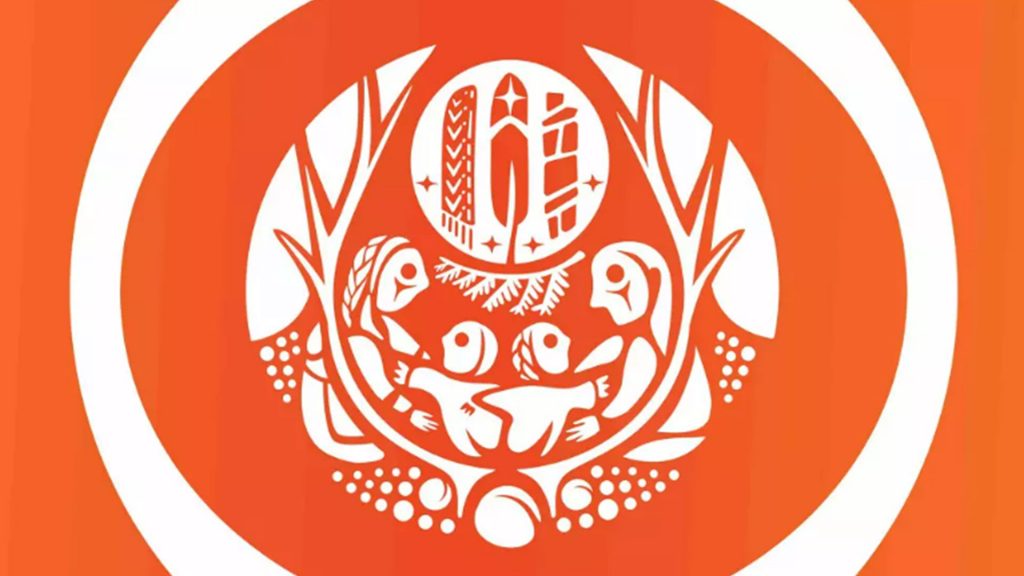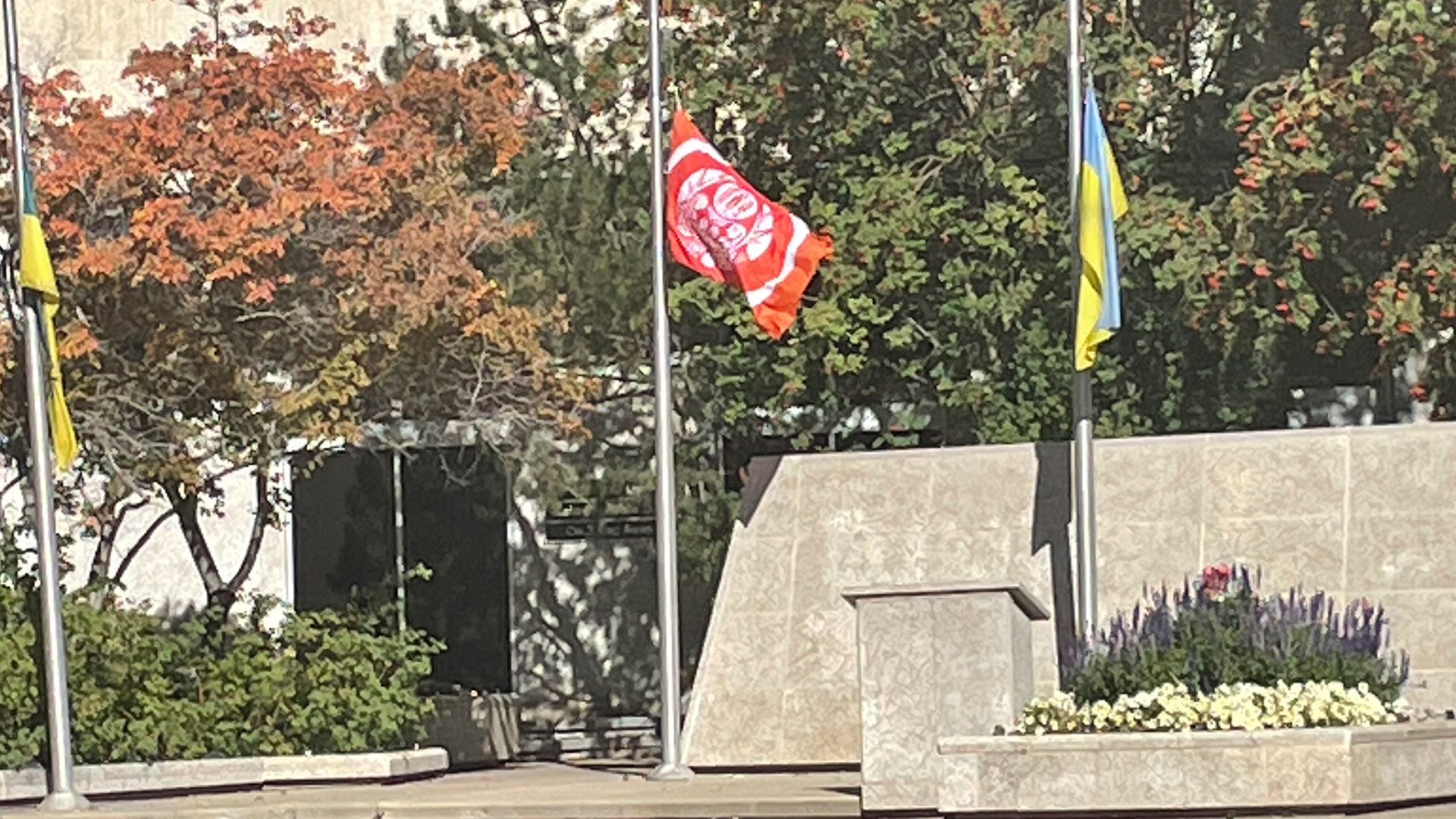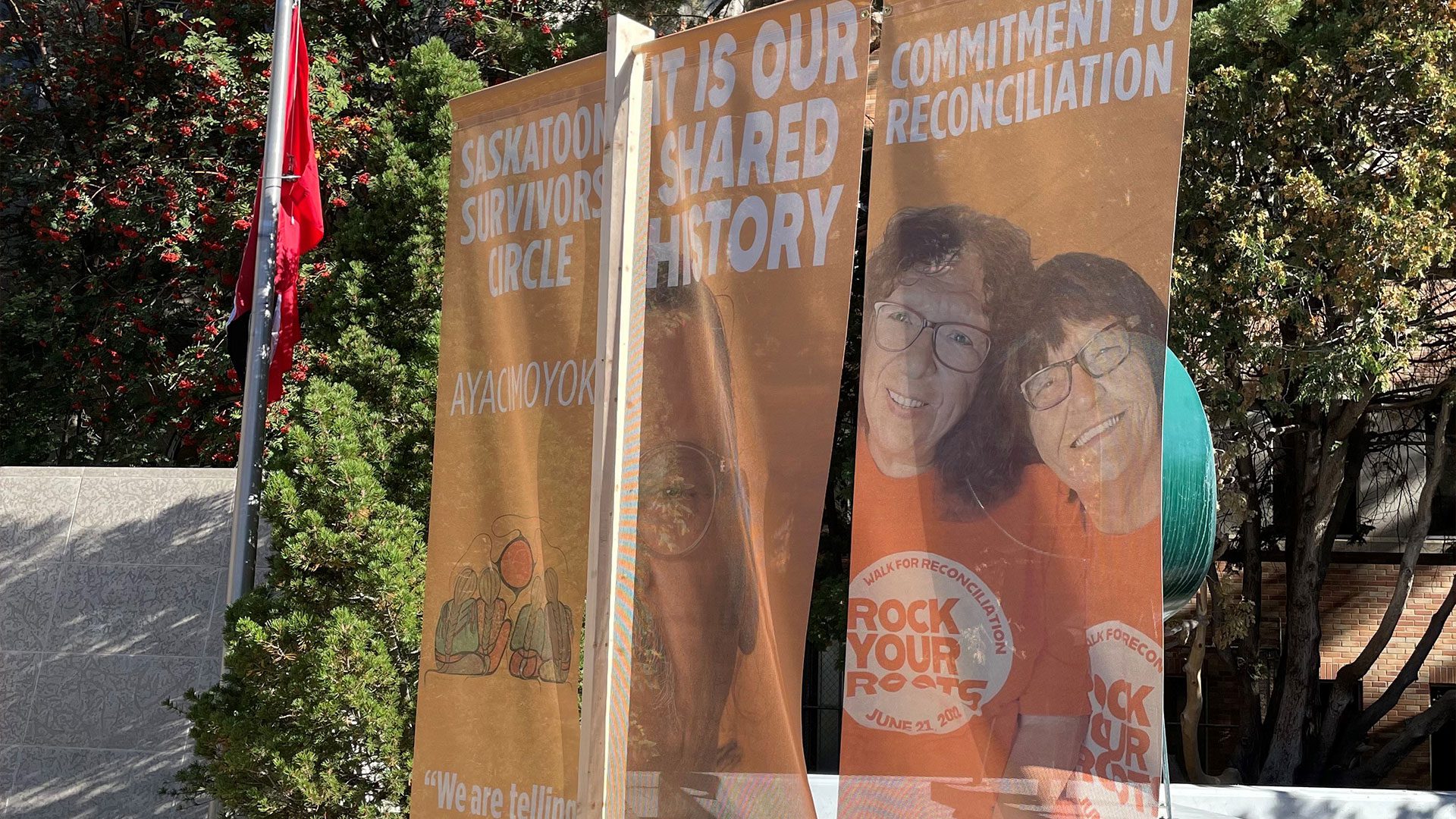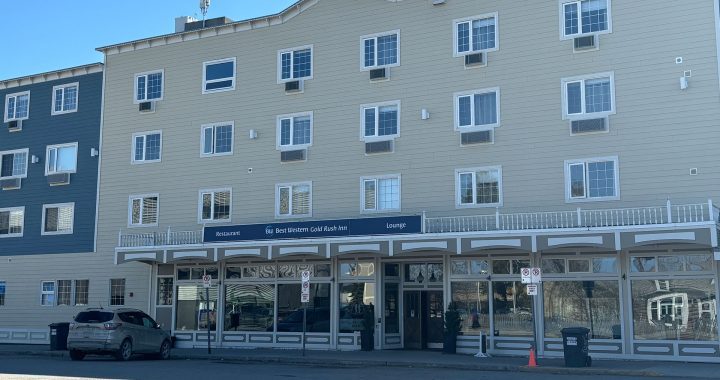
The Survivors’ Flag is flying at Civic Square in Saskatoon as the city marks the lead-up to National Truth and Reconciliation Day.
“Our objective is to collectively set intentions for the National Day for Truth and Reconciliation,” said pipe carrier and knowledge keeper Corine Eyhapaise during a pipe ceremony and flag raising Monday morning.
The flag is meant to honour residential school survivors and all the lives and communities impacted by the residential school system in Canada.

Survivor Eugene Arcand attended the St. Michael’s Indian Residential School in Duck Lake, 80 km north of Saskatoon. He was one of those consulted during the Survivors’ flags creation.
“On the flag, there’s an incomplete circle that surrounds this image much in the same way that there are still many Truths to be told before we come close to understanding the impact residential schools had on Survivors, communities, and the entire nation,” Arcand said. “We are at a point in time where we have to ask ourselves how we want our future generations to see what actions we have taken towards healing and reconciliation.”
Over the weekend, 250 orange banners with reconciliation messages were also installed on light poles in parts of the city.
Saskatoon Tribal Council Chief Mark Arcand said the project is intended to honour the children.
“The children that didn’t make it home, the ones who made it home, and the ones that are still lost and away from the home fires,” he said.

There are 10 different messages on the banners, including, “More than 150,000 attended residential schools,” and “It isn’t just Indigenous history.”
Saskatoon’s mayor Charlie Clark said the city wanted to reach as many people as possible.
“We hope that people will take some time to walk along a piece of the route and take in the messages and reflect on them,” he said.
The National Day for Truth and Reconciliation is Sept. 30.
UNDRIP adopted
The flag raising was part of a historic day in Saskatoon as the city adopted the United Nations Declaration on the Rights of Indigenous Peoples.
City councilors voted unanimously in favour of the declaration known as UNDRIP. The city will work with the Saskatoon Tribal Council on the implementation.
“We are developing this as a partnership. Not a MOU (Memorandum of Understanding). We will walk this path together,” Tribal Chief Mark Arcand told Saskatoon city councillors.
UNDRIP sets minimum standards for the survival, dignity and well-being of indigenous peoples around the world.
The Federal Government adopted its own Bill C-15 in 2020, creating a framework to bring Canada’s laws into alignment with the UN declaration. The bill became law on June 21, 2021, when the United Nations Declaration on the Rights of Indigenous Peoples Act received Royal Assent.









